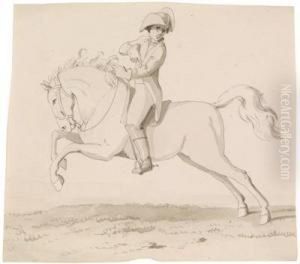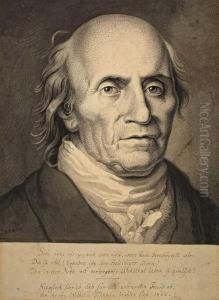Wilhelm Tischbein Paintings
Wilhelm Tischbein, also known as Johann Heinrich Wilhelm Tischbein, was a prominent German painter from the 18th to the early 19th century, celebrated for his neoclassical portraits and historical subjects. Born on February 15, 1751, in Haina, Germany, Tischbein was part of a large family of artists, which laid the foundation for his artistic journey. He showed an early inclination towards art, leading him to study painting under his uncle, Johann Jacob Tischbein, a well-known portrait painter, at the Academy of Painting in Kassel.
Tischbein's quest for artistic excellence took him across Europe. In 1779, he moved to Berlin, where he was influenced by the works of Anton Graff, a leading portrait artist of the time. His journey continued to Rome in 1781, a pivotal move that marked his transition to neoclassicism under the influence of Johann Joachim Winckelmann's theories on art and antiquity. Rome was where Tischbein's style matured, deeply influenced by the classical ideals of beauty and the works of ancient artists. It was also in Rome that he painted one of his most famous works, 'Goethe in the Roman Campagna' in 1787, a portrait of the German writer Johann Wolfgang von Goethe, which cemented his reputation in the art world.
Throughout his career, Tischbein was known for his ability to blend neoclassical ideals with a keen observation of nature, which was evident in his portraits, historical scenes, and mythological subjects. Besides his work as a painter, he held significant positions, including the director of the Academy of Arts in Naples, where he moved in 1789. His time in Naples not only expanded his artistic repertoire to include landscapes inspired by the Italian countryside but also exposed him to new artistic circles and patrons.
Wilhelm Tischbein's legacy is marked by his contribution to the development of neoclassical painting in Germany. His works are characterized by their clarity, simplicity, and serene elegance, embodying the neoclassical ideals of harmony and proportion. Tischbein's influence extended beyond his own works, as he played a crucial role in shaping the artistic tastes of his time through his mentorship of young artists and his theoretical writings on art. He passed away on February 26, 1829, in Eutin, Germany, leaving behind a body of work that continues to be celebrated for its beauty and historical significance.

